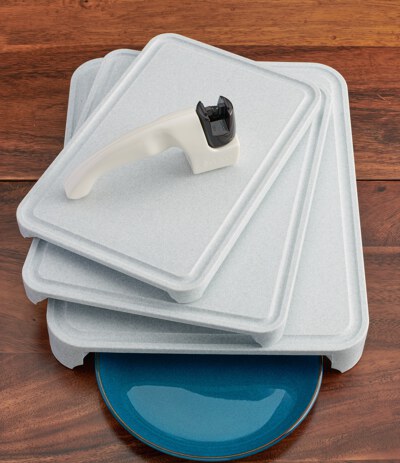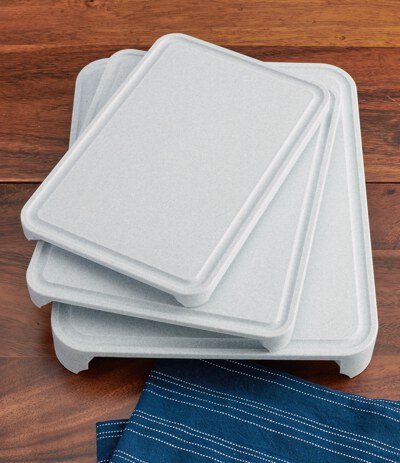Knowing When to Sharpen Kitchen Knives
2946 days ago
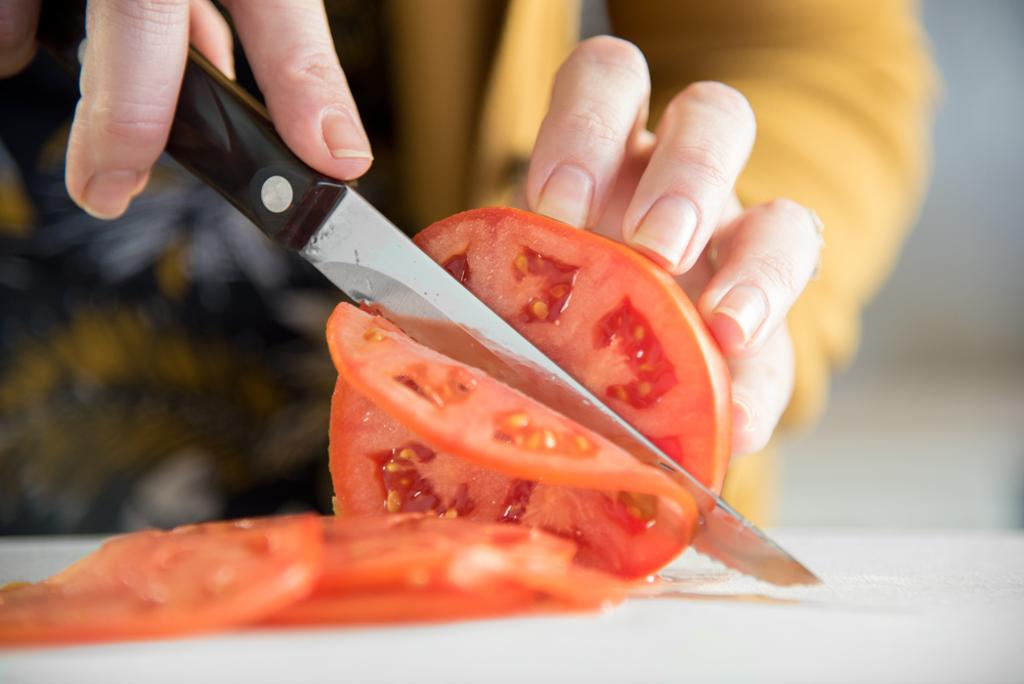
One of the questions we get asked all of the time is when to sharpen your kitchen knives. If you use them regularly you'll start to notice that it takes a little more pressure for the knife to move through what you're cutting. It's at that point where some sort of sharpening is recommended.
There are different rules of thumb for sharpening kitchen knives based on the types of edges. If it's a straight edge knife, you can realign the edge with a home knife sharpener. A Double-D® recessed edge, on the other hand, should stay sharp for years. In either case, knives with both blade types will eventually need to be professionally sharpened.
Sharpening Straight Edge Kitchen Knives
Straight-edge knives need periodic honing. Use a home knife sharpener designed with the knife edge angle in mind to bring back the edge after a couple of uses. Cutco's straight-edge sharpener has carbide sharpening inserts that are set at a 15 degree angle, which is the angle at which Cutco straight-edge knives are designed.
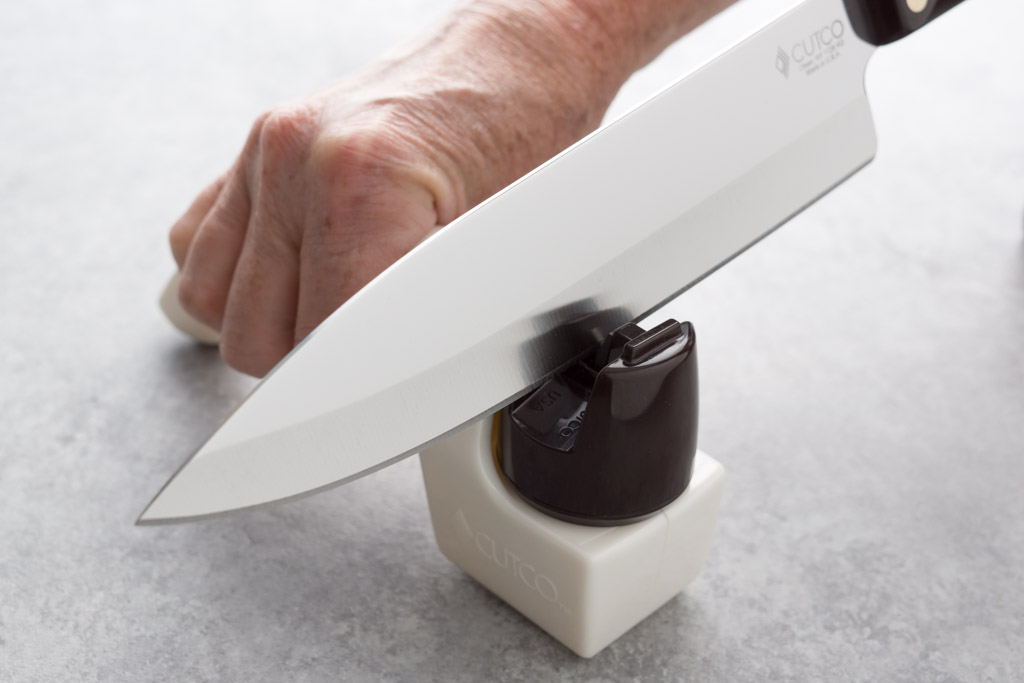
If you notice that cutting performance isn't improving after running a knife through a sharpener, it's time to consider a professional blade sharpening service.
Another way to determine this is to do the paper test. Try to slice through a piece of paper. If it doesn't cut smoothly, it's time for professional sharpening.
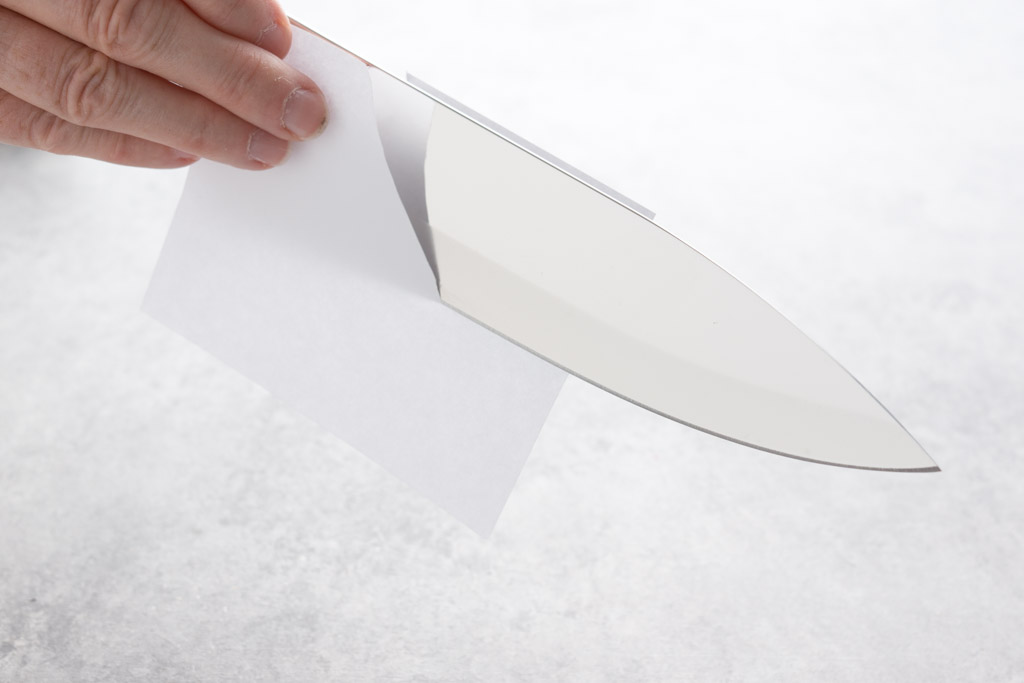
At Cutco we offer factory sharpening of kitchen knives or one of our certified representatives can be called for in-home blade sharpening service.
Sharpening Double-D® Recessed Edge Kitchen Knives
For knives with Cutco's Double-D recessed edge you don't need to sharpen as often. That edge is designed to stay sharp for years, thanks to its geometry. There is a series of cutting edges that are recessed (or indented) along the length of the blade creating points that keep the sharp part of the blade from coming into contact with surfaces that can dull.
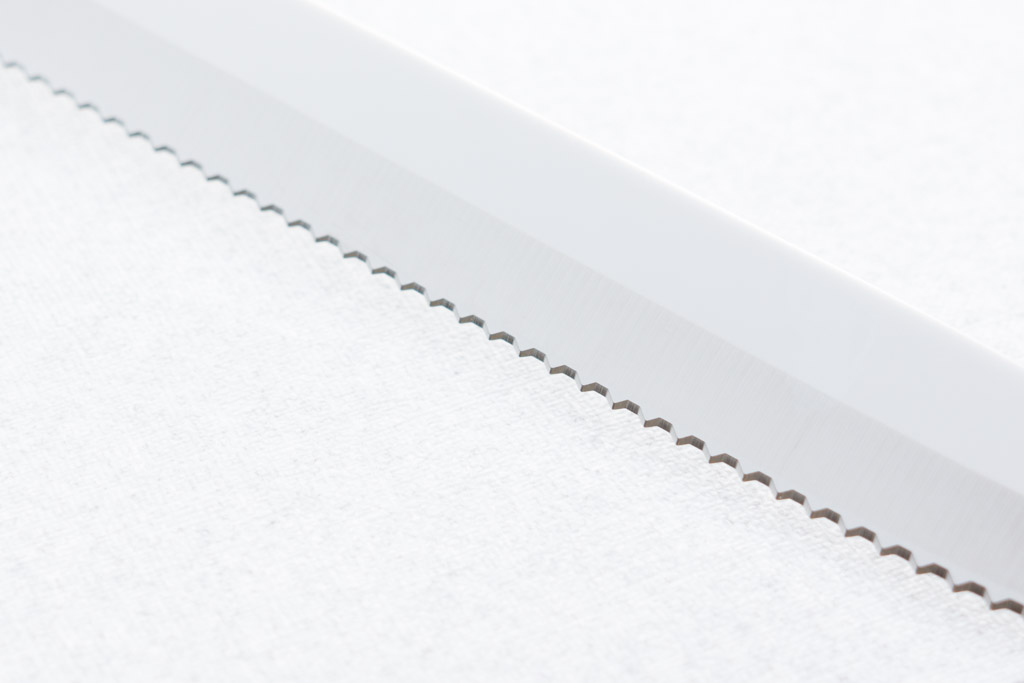
As with the straight edge knives, when you start to notice that the cutting motion isn't as fluid, it's time for professional sharpening. There is no do-it-yourself option for sharpening Double-D edges. However, they can be sharpened at our factory or by a Cutco-certified sharpening representative in your home.
Serrated Knives vs. Double-D – A Distinct Difference
When a serrated knife goes dull it's virtually impossible to bring back the edge. In order to sharpen a serrated knife correctly, it must be done on the exact same grinding wheel it was created on to match the serration.
In place of serrated knives, Cutco makes Double-D recessed edge knives. The difference is that serrated knife edges feature more of a saw design, whereas Cutco's Double-D edge is really a recessed, honed cutting edge.
Why Should I Keep My Knives Sharp?
It's important to know that a sharp knife is a safe knife. That may sound counter-intuitive, but a sharp knife moves through what you're cutting with less pressure allowing for better control.
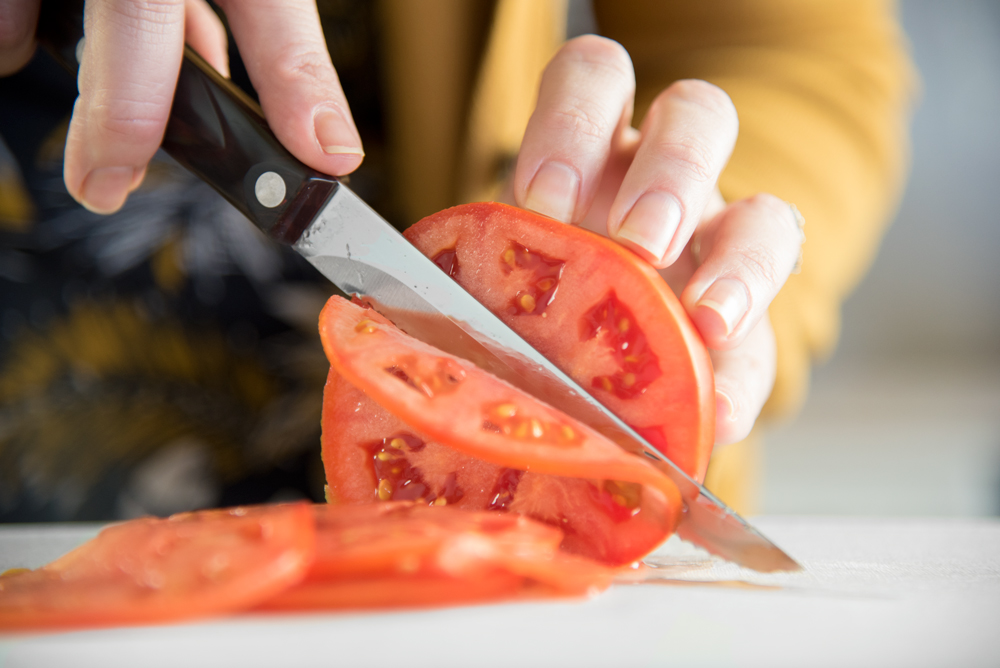
The key to having long-lasting, good-performing kitchen knives is proper maintenance. That means periodic sharpening and not misusing or abusing your knives. The worst thing you can do is use them on glass or ceramic surfaces. Those hard surfaces are unforgiving and will quickly dull your knives
Professional Sharpening at Cutco
Cutco offers a blade sharpening service under The Forever Guarantee at its factory in Olean, New York. The results achieved after professional sharpening are impressive.
For more information on getting Cutco knives sharpened, visit www.cutco.com/sharpening.
